
Butterfly Tenergy 80 Review – part 1
Finally the Tenergy 80 review… I’m excited!!!
Thanks to Butterfly Australia, I’ve been lent a new (sample) sheet of Tenergy 80, so that I can test and review it! Note: They’ve not asked me for a review, nor for anything in return, so I’m expressing my honest and personal opinions here.
I’ll start of with a visual inspection and lots of picture, comparing the Tenergy 80 (T80) to the original Tenergy 05 (T05). Click on the pictures to zoom in for more detail.
Visual Inspection – General
Both the T80 and T05 have only a very mild chemical smell, unlike some of the other latest generation sheets which can have a strong chemical small indicating potential strong boosting effect. I doubt that ‘airing’ these sheets is really necessary, but it’s probably good practice regardless if you’re going to play in any tournament or ITTF events.
The sheet has a very slight oily feel on contact, so wiping with a tissue/cloth before gluing is always recommended, as this can stop good adhesion.
Neither the T80 or T05 have any sort of significant dome, which tends to make it easier to glue and handle.
Visual Inspection – the topsheet
The T80 rubber sheet looks of very high quality, as we’ve come to expect from Butterfly. It looks very similar to the T05 sheet, apart from the obvious labels.
The colour of the topsheet is virtually identical, although the T05 sheet seems to have just a little more shine. The print is very distinct and sharp, which is often how you can tell it apart from fake sheets.
The rubber is already ITTF approved, so as soon as it hits the market early next year, it’s ready to go.
Visual Inspection – the Sponge
The sponge of the Tenergy 80 also looks very similar that of the Tenergy 05, apart from a slightly lighter tint as you can see.
Looking a little closer, you can see that the Tenergy 80 has quite large pores, which also seem of similar size that that of the T05. It looks to me like the sponge is actually the same one of both the T05 and T80, and the very slightly visual differences are just due the the production process.
Both have some (presumably laser etched) text on them, which, apart from the sponge thickness of 2.1mm, does not mean a lot to me, but here is the picture for those that might be interested:
By looking at the cut edge of the rubber, we can see that the pips appear to be of similar length, but the T80 do seem just a little wider. which will contribute considerably to it’s performance. Generally longer pips add more dwell time and spin, whereas shorter and wider pips add more stability and accuracy.
As soon as I’ve cut the sheet, I’ll peel off the top-sheet from an off-cut, so that we can see the pimples in more detail. I’ll insert the picture here, so please check back later.
Pimple Details
I’ve tried to peel off the sponge of a cut-off from both the T80 and T05… with limited success LOL! The top-sheet and sponge are glued extremely well together, which is very good of course, from a player’s perspective. Here is a closeup of both (click to zoom in):
Although a lot of the pips were broken during the seperation, it appear that the T80 have just a slightly wider base, but taper near the ends. Pip height seem the same, although I’d need proper measuring tools to be sure. Topsheet thickness also seems very similar.
What does indicate that the rubber composition is different is that when hold both pieces to the light, the colours seems distinctly different. Since the topsheet thickness is so similar, the difference is likely due to different rubber mix, which no doubt will affect performance.
EDIT: I’ve since discovered some information that illustrates that the pip size is similar, although if this is truly drawn to scale, it implies that the T80 pips are longer than T05 and slightly shorter than T64, see pictured here:
Sponge and top-sheet hardness
With my durometer I measured (take about 10 readings, average the result) the sponge hardness of both the T80 and T05, and not surprisingly both came out virtually identical at 49degrees. Check in the Sponge Hardness Table to see how this compares to other rubbers.
Although it’s hard to measure the top-sheet independently, I thought I’d measure these as well as it does give some indication of how ‘soft’ the rubber feels on ball contact. Again both measured the same value of about 52degrees.
Rubber sheet weight
For those that were hoping the T80 would be significantly lighter, you’ll be only slightly happy, as the uncut sheet was only 2 grams lighter.
T80 – 68g (179mm x 166mm)
T05 – 70g (179mm x 167mm)
Check the Rubber Sheet Mass table to see how this compares to other rubbers.
Although Tenergy 80 on the heavy side, in fairness virtually all latest generation sheets appear to be on the heavier side, which obviously contributes to their performance, so we can’t really hold this against Butterfly.
Click here to go to read part 2, my playing review of the Tenergy 80 rubber
Click here to read part 3, further test and conclusions about the Tenergy 80 rubber.
By: haggisv


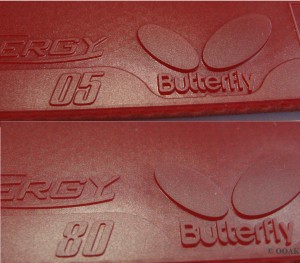




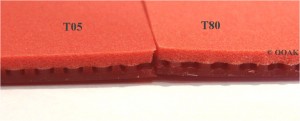
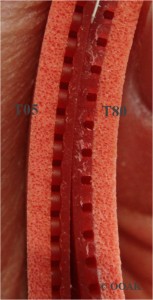
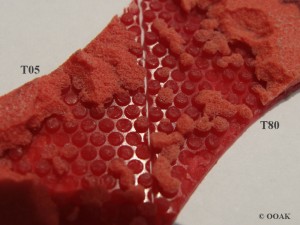


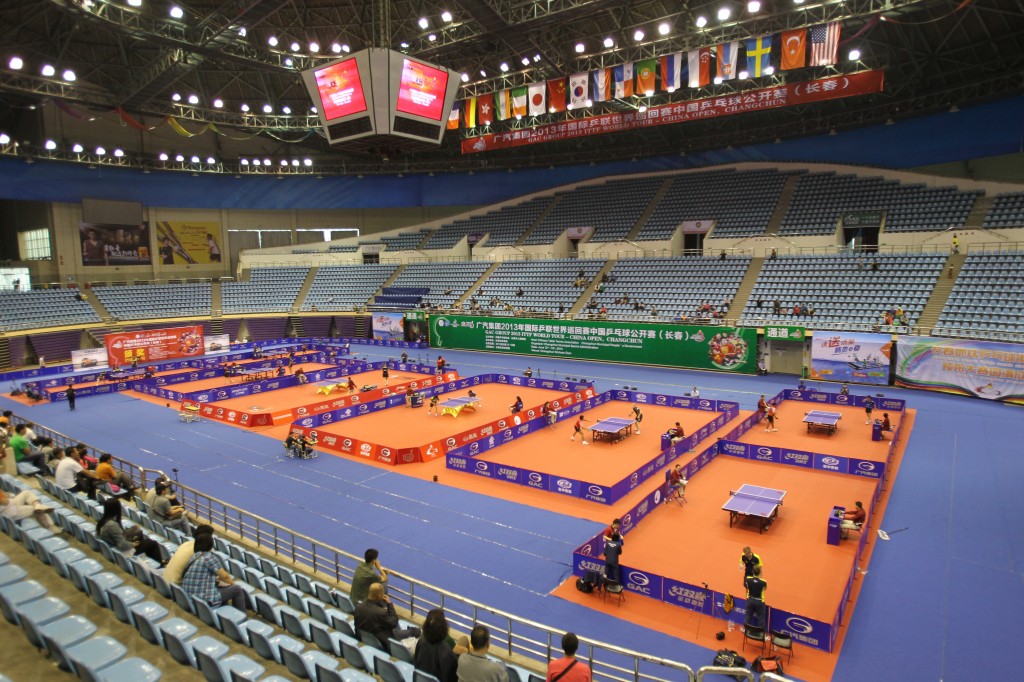
[…] of with a visual inspection and lots of picture, comparing the Tenergy 80 FX (T80FX) to the original Tenergy 80 (T80). Click on the pictures below to zoom in for more […]
Note: Picture of pimple size added to the “pimple details” section.
Thank you Jay!
Yes that does make perfect sense. I actually think the sheet feel more like something between the T05 and T25, rather than one closer the T64.
Thank you very much for your excellent review, Haggisv.
The info you provided in your report are really useful and helped me in deciding if I should give T80 a try or not.
I think the core difference between T05 and T80 is the pip’s conic shape in the T80 which makes the surface less “biting” than T05. It’s the reason that T80 is less sensitive to spin than T05 and this behavior seems to manifested itself in your test and your friend, StrongPong’s, test.
I’ll ask, but usually this is not the sort of information that manufacturers release though…
Haggisv,
I am enjoying your review. can you please tell us what are the unique playing properties of the rubber that made it necessary for Butterfly to release it? What is Butterfly saying?